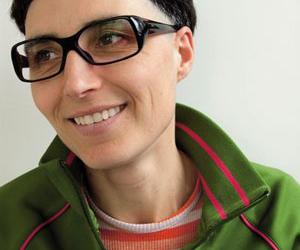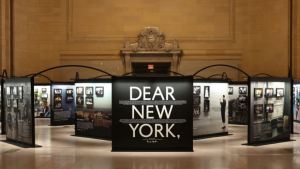
The art and design worlds will mingle and merge when Design Miami/Basel and Art Basel open next week in Switzerland. The event is roundly seen as the premier event for collectors to ogle and purchase new work. We thought it fitting to ask a few industry professionals what their thoughts are on design presented as art and whether it has a positive or negative impact on the design industry.
Renny Ramakers, co-founder and director of Droog.
I detect that the boundaries between art, design and architecture are blurring as they manifest mutual intentions and a mutual attitude. However, art-design objects such as the ones presented at fairs like Art Basel Miami I am more sceptical about. Fairs like these are focussed on providing designers with the opportunity to experiment with new ideas, materials, techniques and aesthetics, however it often turns out that collectors at fairs like these are only interested in glamorous work that shows how expensive it was to manufacture. As a consequence, designers will make such kind of work. I regard these as meaningless objects not to be considered as serious design, neither as art.
Lowery Stokes Sims, curator at the Museum of Arts and Design, New York City.
I think it certainly reflects developments in the creative sector where design, art and craft are converging. However, I think it might be anachronistic given the publicity around the theme of “design for the other 90%”. I suppose there will always be a demand for luxury. The question is how to market it and find buyers. Furthermore, I suspect that the hierarchies in the art world that position “art” over “design” would persist so that a self-defined “artist” would have their design work received differently than a self-defined designer’s artwork would be.
Olivia Yassudo Faria, founder of Brazilian gallery +Coletivo Amor de Madre.
While design galleries have a commercial imperative, it is also important that we create value for collectors through the exploration of new ideas and directions in design. If there is a demand for collectable design on the one hand and designers are creating really relevant work on the other, then you have a viable business. Otherwise design-as-art is just a trend, all about hype and high-end shopping. One of the problems, though, is that design galleries compete with the same money that is invested in art, which is a terrible thing, because we (design galleries) lose most of the times. A lot of collectors still feel more comfortable to spend their money on art as the value and return on investment is proven. Here, design fairs act as educational platforms and networking opportunities to build up relationships with collectors. I really get annoyed with how mediocre designs can get, so it is important that there is an exchange between art and design to push forward debate about new issues we are facing, get different points of view and rethink what design should do.
Rick Valicenti, founder and design director of Thirst/3st.
I believe that attention focused on a design object is always positive. Everything made is a result of design and when we create objects using the medium of design to give form to a statement, we see art. For me, the difference between art and design is the difference between the message and the message maker. Artefacts of our time blur the boundaries and potential of a design medium.
Matali Crasset, French product and industrial designer.
I am a designer who has made the choice to work with contemporary art galleries, which speaks to my interest in art as a designer. The gallery space has allowed me to realise collaborations with artists and opened a space where the issue of experience - in the way people experience art - becomes central to my work as a designer.










